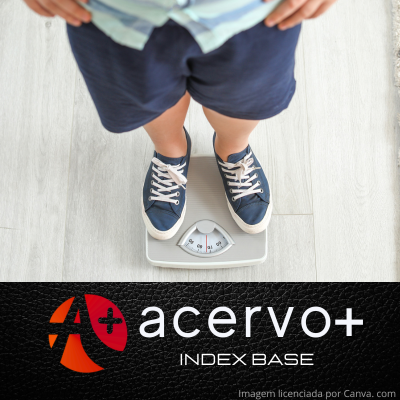Os impactos das condições sociais na prevenção do sobrepeso e da obesidade em crianças e adolescentes
##plugins.themes.bootstrap3.article.main##
Resumo
Objetivo: Descrever o impacto da prevenção da obesidade na qualidade de vida de crianças e adolescentes, com enfoque naqueles em vulnerabilidade social. Métodos: Trata-se de uma revisão integrativa, com estudos dos últimos cinco anos (2019-2024) das bases de dados PubMed e Web of Science, com a estratégia PICO: P (crianças em vulnerabilidade social), I (prevenção da obesidade), C (crianças saudáveis e obesas) e O (consequências na saúde). A questão norteadora foi: "Qual o impacto das condições sociais na prevenção da obesidade infantojuvenil?”. Foram aplicados descritores e operadores booleanos, resultando em 378 artigos, reduzidos a 24 após criteriosa exclusão. Resultados: Quadros com base nos 24 artigos selecionados apresentaram autores, tipos de estudo, objetivos e principais achados. O primeiro quadro demonstrou a relação dos aspectos socioeconômicos com o diagnóstico estudado, enquanto o segundo abordou sua prevenção, com foco nos contextos dos pacientes. Considerações finais: Foi concluído que os fatores socioeconômicos são influentes na saúde e qualidade de vida dessa faixa etária, recomenda-se intervenções equitativas e adaptadas.
##plugins.themes.bootstrap3.article.details##
Copyright © | Todos os direitos reservados.
A revista detém os direitos autorais exclusivos de publicação deste artigo nos termos da lei 9610/98.
Reprodução parcial
É livre o uso de partes do texto, figuras e questionário do artigo, sendo obrigatória a citação dos autores e revista.
Reprodução total
É expressamente proibida, devendo ser autorizada pela revista.
Referências
2. ANDRES UM, et al. “Understanding the Relationship between Limited Neighbourhood Food Access and Health Outcomes of Children with Obesity.” Pediatric Obesity, 2024.
3. COBAL S, et al. Effect of school-based educational intervention on childhood obesity in Croatian urban and rural settings. Children (Basel), 2024. 11(7).
4. DUNKER KLL, et al. Effects of participation level and physical activity on eating behavior and disordered eating symptoms in the Brazilian version of the New Moves intervention: data from a cluster randomized controlled trial. Sao Paulo Medical Journal, 2021. 11(7): e867.
5. ELI K, et al. Parents’ experiences following conversations about their young child’s weight in the primary health care setting: a study within the STOP project. BMC Public Health, 2022. 22(1).
6. EYNDE EVD, et al. Changes in the health-related quality of life and weight status of children with overweight or obesity aged 7 to 13 years after participating in a 10-week lifestyle intervention. Childhood Obesity, 2020. 16(6): e412-420.
7. GADSBY EW, et al. Impact of a community-based pilot intervention to tackle childhood obesity: a ‘whole-system approach’ case study. BMC Public Health, 2020. 20(1).
8. GONCALVES WSF, et al. Parental influences on physical activity and screen time among preschool children from low-income families in Brazil. Childhood Obesity, 2022. 19(2).
9. HEERMAN WJ, et al. Predicting early emergence of childhood obesity in underserved preschoolers. The Journal of Pediatrics, 2019. 213.
10. HERSCH DE, et al. Primary care providers’ perspectives on initiating childhood obesity conversations: a qualitative study. Family Practice, 2021. 38(4): e460-467.
11. HOMS, C. et al. Family-based intervention to prevent childhood obesity among school-age children of low socioeconomic status: study protocol of the FIVALIN project. BMC Pediatrics, 2021. 21(1).
12. KOIVUSILTA L, et al. A qualitative study on multisector activities to prevent childhood obesity in the municipality of Seinäjoki, Finland. BMC Public Health, 2022. 22(1).
13. LEMS E, et al. “McDonald’s is good for my social life”. Developing health promotion together with adolescent girls from disadvantaged neighbourhoods in Amsterdam. Children & Society, 2020. 34(3).
14. LIM H, LEE H. Eating habits and lifestyle factors related to childhood obesity among children aged 5-6 years: cluster analysis of panel survey data in Korea. JMIR Public Health and Surveillance, 2024. 10(1).
15. MARTINS E, et al. Food intake, physical activity and quality of life among children and youth. Work, 2021. 69(2).
16. MARTTILA-TORNIO K, et al. Lower parental socioeconomic status in childhood and adolescence predicts unhealthy health behaviour patterns in adolescence in Northern Finland. Scandinavian Journal of Caring Sciences, 14 jul. 2020.
17. MENDES KDS, et. al. Revisão integrativa: método de pesquisa para a incorporação de evidências na saúde e na enfermagem. Texto contexto - enferm., 2008. 17(4).
18. MIGUEL-BERGES ML, et al. Longitudinal associations between diet quality, sedentary behaviours and physical activity and risk of overweight and obesity in preschool children: the ToyBox-study. Pediatric Obesity, 2023. 18(10): e13068.
19. MILANOVIĆ SM, et al. Socioeconomic disparities in physical activity, sedentary behavior and sleep patterns among 6- to 9-year-old children from 24 countries in the WHO European region. Obesity Reviews, 2021.
20. MOSCHONIS G, et al. Prevalence of childhood obesity by country, family socio-demographics, and parental obesity in Europe: the Feel4Diabetes study. Nutrients, 2022. 14(9): e1830.
21. REDA M, et al. Prevention of caries and obesity in children with immigrant background in Norway: a study protocol for a cluster randomized controlled trial. BMC Oral Health, 2023. 23(1): e620.
22. ROSAL MC, et al. The Healthy Kids & Families Study: outcomes of a 24-month childhood obesity prevention intervention. Preventive Medicine Reports, 2022. 31.
23. RUSSELL SJ, et al. Estimating the effects of preventive and weight-management interventions on the prevalence of childhood obesity in England: a modelling study. 2023. The Lancet Public Health, 2023. 8(11) e878–e888.
24. YANG-HUANG J, et al. Clustering of sedentary behaviours, physical activity, and energy-dense food intake in six-year-old children: associations with family socioeconomic status. 2020.12(6): e1722.

